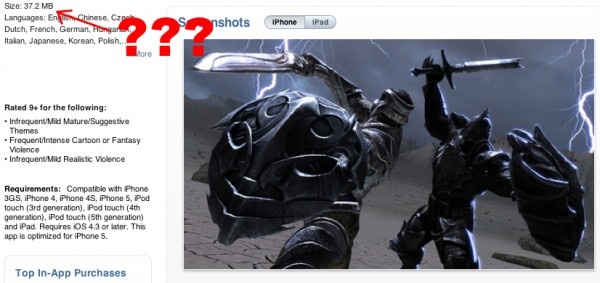Buyers Beware - App-Shopping Red Flags
The App Store can be a wonderful place full of far too many games to count spread across every genre imaginable. However, despite all the rules and regulations for submissions, a few shady characters will inevitably fall through the cracks. In my numerous App Store searches I’ve seen my fair share of cash-grabs, some obvious and some not so much, but I’ve also begun to notice a few telltale signs that can be a good indication of a developer’s intentions.
This guide is not written in stone, and there are always exceptions to every rule. And I in no way mean to imply that the majority of App Store developers are simply out to con the unwary out of their money. Quite the contrary. Most of them are great folks who are just trying to make an honest dollar doing what they love and making other people happy. I only wish to pass a few tips along in the hopes that it may give you all a better idea of some of the things to look out for.
Tip #1 - Judging a game by its icon
![]()
Not all icons can be winners. That being said, if you see an icon featuring a recognizable character or a recognizable character who’s been slightly tweaked so they look a little different, proceed with caution. Using an icon that looks incredibly similar to a top selling iOS (even PC or console) game is a tactic often used to trick potential buyers.
Tip #2 - Check the screen shots

Screen shots are another good indication of legitimacy. They won’t all feature showpiece visuals but they still need to be there. If a game only has one or two screens available for viewing in the store, and those screens don’t actually show any in-game content, tread very carefully. Another “tell” of sorts is the actual content of the game screens. If the visuals look exactly like another game, or if (and I’ve seen this before) it looks like someone pasted some virtual buttons on top of a screencap, you might want to think twice before buying.
Tip #3 - File size

You see a game that looks awesome and the description makes it sound like the best thing since, well, the iPhone and it has a dozen glowing reviews. Before you hit “Purchase,” just take a quick peek at its file size. If this jaw-dropping showcase of iOS visual prowess takes up 5 MB (or even 50), it’s highly unlikely those screens or reviews are for real. Which brings me to my final tip.
Tip #4 - Check those reviews

User are largely subjective, but they can still be quite telling. If a game has a dozen five-star reviews and three or four with one-star, take the time to read the one-stars. Not liking a game is one thing, but when a buyer claims the game in question is totally different than what’s advertised you might want to pay attention. Also look out for reviews that are way too positive. It might be a trap.






